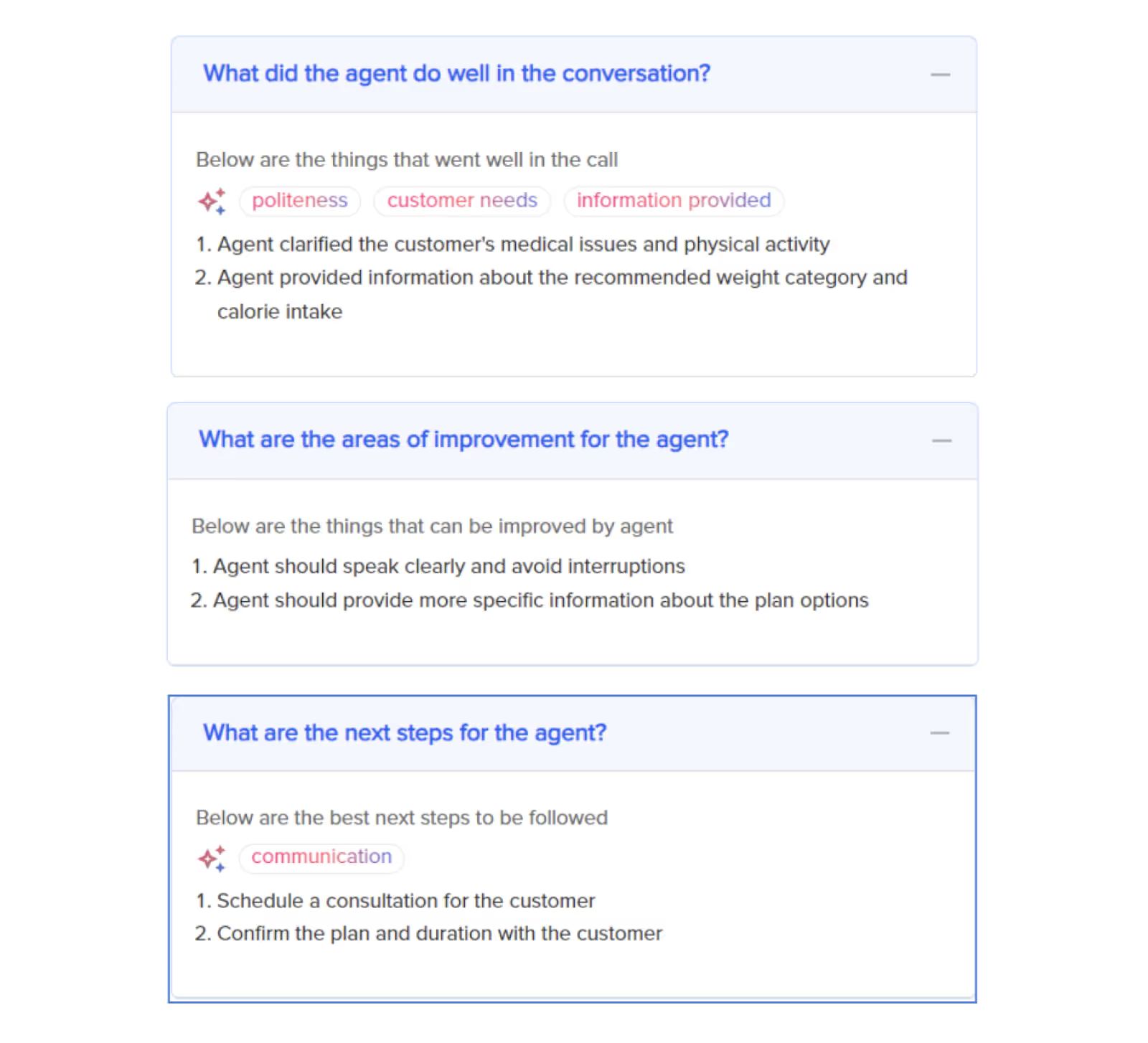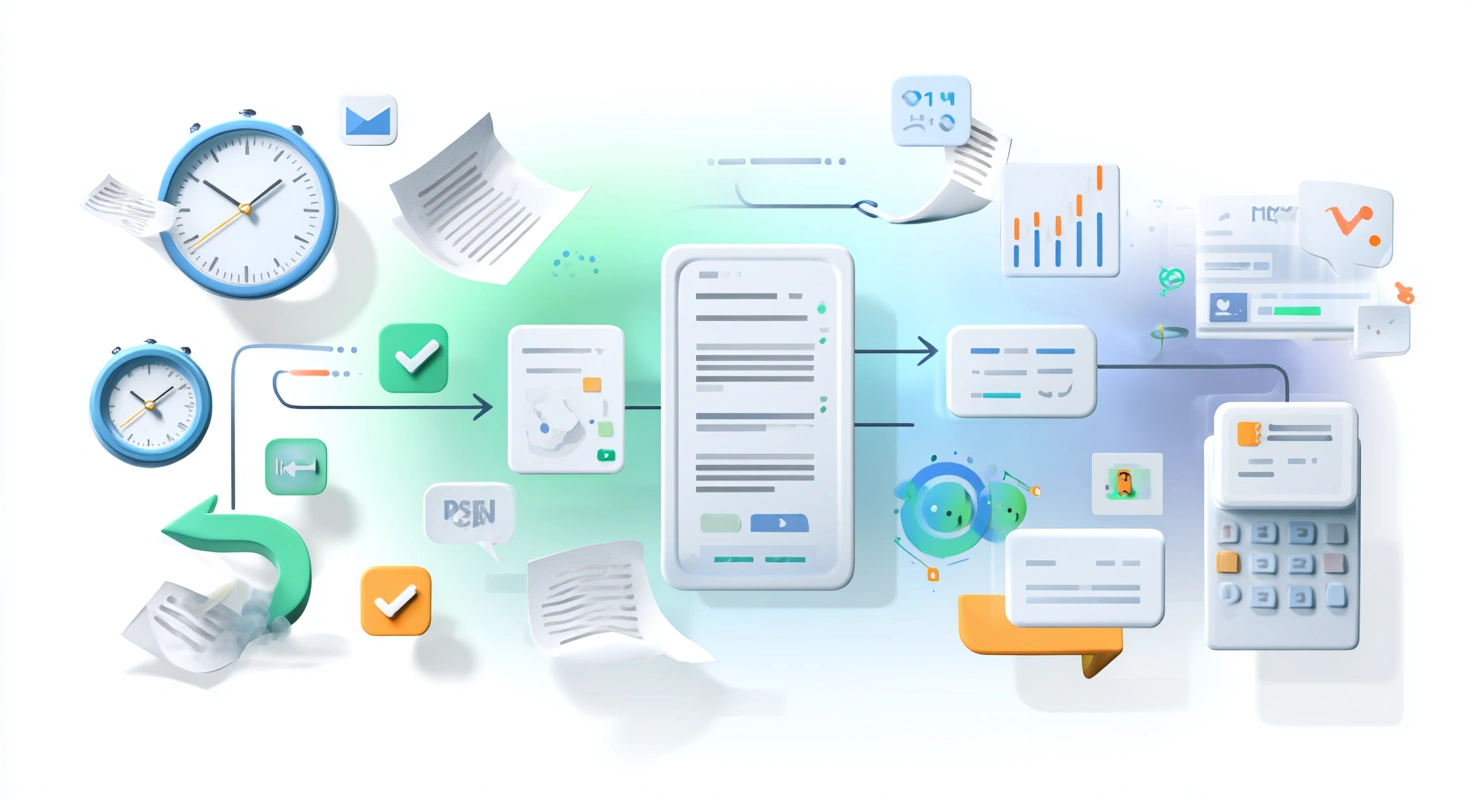Empathy plays a pivotal role in customer service in creating positive client experiences. Empathy or compassion statements are powerful ways to connect with people and show customers that you genuinely understand their concerns.
They can defuse customer tension, express understanding, and provide personalized support.
But many people don't know how to apologize without saying sorry. After all, when you’re in a heated customer dispute or trying to find an equitable resolution, using long, drawn-out sentences isn't feasible!
However, there's a misconception that using empathy statements means constantly saying, "I'm sorry."
In this blog post, we'll explore how to apologize without saying sorry and demonstrate how focusing on empathy can help provide exceptional customer service.
Discover how to express empathy with Convin.
What Is an Empathetic Statement and Apology Statements and Their Differences?
Empathy and apology are two distinct methods used in customer service to address a customer's concerns.
An empathy statement acknowledges and understands the customer's situation. It helps build a connection with the customer and shows that you care about their feelings.
On the other hand, an apology is an admission of fault and an expression of regret for a specific mistake or issue.
It's crucial to understand the difference between the two.
While an empathy statement can help diffuse the situation, an apology is necessary when the customer has been wronged.
Incorporating empathy statements and apologies into customer service interactions can help create a positive impact and build stronger customer relationships.
It is essential to highlight that all customer service professionals should master how to empathize without saying sorry.
Understanding Empathy and Compassion Statements
Empathy statements are expressions of understanding and compassion towards a customer's situation or problem.
They convey your willingness to help and your genuine concern for their well-being.
While "I'm sorry" is a common way to show empathy, there are effective alternatives to learning how to empathize without saying sorry.
1. Acknowledge the Issue
Instead of apologizing, acknowledge the customer's issue directly.
For example, suppose a customer reports a technical problem with your product.
In that case, you can say, "I understand that you're experiencing technical difficulties, and I appreciate you bringing this to our attention."
2. Express Concern
Learn how to sound empathetic by showing genuine concern for the customer's feelings or situation.
For example, you can say, "I can imagine how frustrating it must be for you," or "I'm concerned that this issue is causing you inconvenience."

3. Offer Support
Let your customers know that you are there to support them.
Try contacting your customer with phrases like, "I'm here to help you resolve this issue," or "Please know that I'm committed to finding a solution for you."
4. Use Positive Language
While addressing the problem, use positive language that reassures the customer.
For instance, "We'll work together to get this sorted out," or "I'm confident we can find a resolution."
5. Empathize with Their Perspective
Try to understand the customer's point of view and acknowledge it.
For example, you can say, "I see why you would feel that way," or "It's completely understandable that you'd be frustrated in this situation."
6. Show Appreciation
Express gratitude for the customer's feedback or patience during a challenging situation.
For example, "Thank you for bringing this to our attention" or "I appreciate your patience as we work through this."

Learn How To Empathize Without Saying Sorry
Listening with empathy is an essential communication skill for call center agents to build strong relationships with customers. This foundational skill is especially important in effective call center services, where showing understanding without constantly apologizing can make a significant difference.. Positive empathy statements can help convey a call center agent’s compassion.
An empathetic response means acknowledging a customer's emotional state and putting yourself in their shoes to understand their feelings.
Instead of saying sorry, call center agents should offer encouragement and support, such as,
"I can understand why that would be upsetting."
The first step to becoming a great customer service agent is learning how to say I empathize with you. This skill, paired with the right responses, enhances listening and strengthens connections with others.
This blog is just the start.
Unlock the power of Convin’s AI with a live demo.

Use Empathetic Statements that Invite the Other Person to Tell their Story
We all have stories that shape who we are, and listening to others' narratives is essential.
One way to encourage someone to share their story is by using reflective statements.
This technique involves listening intently to what the other person is saying and then repeating a summary of their words back to them.
By actively listening and using reflective statements, Call center agents create a safe and welcoming space for customers to share their experiences and stories, ultimately building stronger connections and understanding.
This exercise is essential for call center agents as we know that even a minor issue can lead to a herd argument with the customer.
Feeling heard can improve customer handling, enhance understanding of customer sentiment, and boost satisfaction.
Check out this Empathy Statements Checklist for FREE.
Understand When it is Appropriate to Use an Apology in Addition to Empathizing
Empathy plays a significant role in building strong connections between call center agents and customers, and sometimes, it requires more than just acknowledging customer’s sentiments.
While empathetic responses show that call center agents understand how someone feels, adding an apology can further validate their emotions.
Apologizing doesn't necessarily mean accepting fault, but it shows that you care about the other customer's well-being and understand the discomfort they might be feeling.
Incorporating positive empathy statements, such as
"I can see why this situation would make you feel upset,"
followed by an apology, can create a sense of trust and support in the relationship.
Benefits of Using Empathy Statements: How to Empathize Without Saying Sorry
1. Improved Customer Relations Customers appreciate genuine empathy, and using empathy statements without saying sorry can build stronger relationships based on understanding and trust.
2. Problem-Solving Empathy statements shift the focus from dwelling on the problem to finding solutions, making it easier to address issues effectively.
3. Confidence and Positivity Positive language and expressions of concern can boost the customer's confidence in your ability to resolve their problem.
4. Reduced Apology Fatigue Constantly saying "I'm sorry" can lose meaning and impact.
By learning how to show sympathy without saying sorry, you can diversify your empathy statements, keeping your message fresh and impactful.
Help Your Team Understand Empathy and Learn How to Apologize Without Saying Sorry with Convin
Convin, an advanced AI-powered communication and customer service platform, can significantly enhance your ability to use empathy statements effectively in customer service without constantly relying on apologies. Here's how Convin can help.
1. Sentiment Analysis
The platform's sentiment analysis capabilities help you gauge the customer's emotional state accurately. Convin can identify whether a customer is frustrated, satisfied, angry, or confused, allowing you to tailor your empathy statements accordingly.

2. Automated Responses and Real-Time Assistance
Convin's ability to transcribe and analyze customer calls in real-time means that agents can receive immediate, on-screen prompts and recommendations to assist them in delivering precise and timely information to customers.

3. Personalized Interactions
Convin can personalize responses based on the customer's history and preferences. Moreover, using an AI humanizer will add a personal touch that enhances customer's perception of empathy, as it demonstrates that you understand their specific needs and concerns.
4. Continuous Improvement
Convin continually learns from interactions and customer feedback, improving its empathy statement suggestions over time. This means that the platform becomes even more effective at helping your customer service team deliver empathetic responses as it gains experience. It even shares the conversation feedback generated by AI, leading to continuous improvement across the organization.

5. Analytics and Reporting
Convin automatically transcribes and analyzes call recordings and provides valuable insights into customer interactions. It allows you to track the effectiveness of your empathy statements and customer satisfaction levels, using this data to make informed adjustments and improvements to your customer service strategies.
6. Call Coaching and Training
Convin provides call recording and analysis tools that help coaches and trainers coach and train call center agents using insightful training materials to reinforce best practices.
By identifying areas for improvement and sharing best practices, businesses can enhance agent efficiency and reduce call durations, ultimately improving overall call center performance.
Building listening skills with empathy can be one of the most beneficial gifts call center agents can give customers. Convin empowers your customer service team to excel in conveying empathy without relying solely on apologies.
Its advanced AI capabilities, including natural language understanding, sentiment analysis, and personalized interactions, make it invaluable for enhancing customer relationships and delivering exceptional service.
Empathy is the practice of understanding people - their feelings as well as their perspectives - and it's an essential tool for a healthy relationship.
Are you curious?
Get on a quick call to learn how to apologize without saying sorry!
FAQ
1. How to apologize without saying sorry?
In contact centers, apologizing without saying sorry means acknowledging concerns and showing empathy. For example, "I understand this is frustrating, and I’ll resolve it right away."
2. How to show sympathy without saying sorry?
Empathize with customers by actively listening to their concerns, validating their feelings, and assuring them that you're committed to finding a resolution, all without saying "sorry."
3. How do you use empathy and acknowledgment statements?
Acknowledge the issue by expressing understanding and appreciation for the customer's feedback. This signals your commitment to addressing their concerns without issuing an apology.
4. How to empathize without saying sorry?
Demonstrate empathy by actively listening to the customer's situation and expressing genuine concern, assuring them that their needs are a priority, without resorting to a formal apology.







.avif)